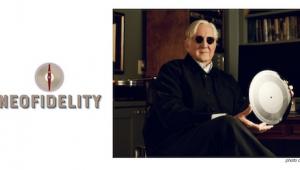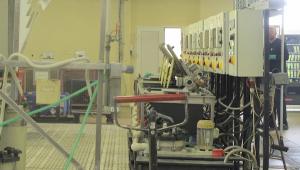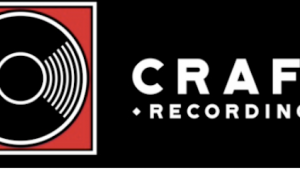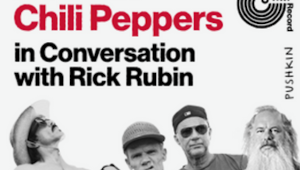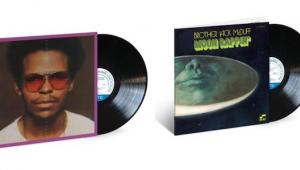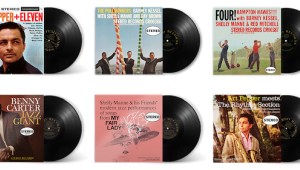Could you expand on what this means? I thought it meant something as involved as taking the original, multi-track recording and recombining the tracks to create a new master, hence, “remaster.” But looking at one of your recent postings, where Bernie Grundman has simply added 0.25dB emphasis in a few sections of the frequency spectrum, of a copy, may also be called remastering. Bit confused.
"Feel Flow" - The Sunflower & Surf's Up Sessions 1969-1971," Box Due July 30

"Feel Flows" will also be released in abbreviated versions including 4LP on both black vinyl and limited edition Translucent Blue and Translucent Gold color vinyl, 2LP black vinyl and 2CD editions. Fans of Sunflower know that the album was recorded in true stereo not pan-potted mono. The original Artisan Sound mastered LP sounds swell!
Housed in a book style package, the set is rounded out with a 48-page book loaded with unreleased and rare photos, lyric sheets, tape box images, recording artifacts, insightful new liner notes by noted radio veteran and Beach Boys aficionado Howie Edelson, and new and archival interviews from Al Jardine, Brian Wilson, Bruce Johnston, Carl Wilson, Dennis Wilson, Mike Love, and others.
The unreleased gem, “Big Sur"originally recorded for Surf’s Up, unreleased for more than five decades i now available for streaming. The Spotify stream has already been played more than 400,000 times. It sounds awful. Hopefully the "real thing" will sound better?
- Log in or register to post comments


I'll give this a go. I consider myself a learner rather than an expert, and I apologize in advance for the length of this response.
Remixing audio typically involves going back to the original multitrack tapes or digital files (3, 4, 8, 16, 24 tracks, etc.) and mixing the various elements that were recorded on those tracks into a coherent mono, stereo or surround version. Engineers apply gain, EQ, audio compression/limiting, and various effects like reverb, echo, delay, modulation and so on to create the final mix. Often a large multitrack console is used to accomplish this. Sometimes the goal is to update the sound of the original, for example, by removing excess reverb, cleaning up background noise, or enhancing vocals for clarity. Other times the goal is to recreate as closely as possible the original mix which may be worn out, damaged or missing.
From there, the final mix is mastered. Mastering involves making copies of the completed mixes and sequencing material as well as normalizing volume levels across all tracks on an album. Additionally, adding fades, applying compression or limiting to control dynamic range, and applying EQ to achieve a consistent sonority or to enhance the overall sound are common during the mastering phase. Mastering, among other things, is often about fine tuning the mix rather than drastically re-voicing it.
Mastering also involves preparing the files, whether analog (tape) based or digital, to be distributed on various media like vinyl, CD, hi res digital, streaming, blu ray, SACD and so on. Mastering for vinyl presents unique challenges because of the idiosyncrasies of the format that I won’’t go into here, but good vinyl mastering engineers are highly skilled artisan and engineers.
Remastering can mean different things, but it often involves going back to the original pre-mixed tapes or the backup of the original mix, and going through the mastering process again. The goal is sometimes to remove background noise, add clarity or rebalance the frequency range. In some cases, the goal is to recreate the original sound of the master tape as closely as possible for new media or new vinyl releases or to simply replace old masters. Notes made by original engineers as well as the most pristine versions of the original available often guide the process. .
I’m afraid I’ve grossly oversimplified the processes here. I’ve certainly missed some important concepts, so maybe others can fill in the gaps.

The mastering process that is of particular interest to audiophiles is the cutting of new lacquers to create vinyl reissues of popular pre digital albums. In the case of highly regarded recordings where preservation of the original sound of the album is highly prized, engineers will find the best version of the original master tapes or a close sibling and cut lacquers directly from them so as not to introduce any new tonal aberrations or artifacts. This is tricky, because the cutting process can be difficult to reproduce in exactly the way it was done 50+ years ago. It requires a very talented engineer to get it right.
Transferring the original masters to a computer allows the engineer to manipulate the files in a nondestructive manner before the lacquers are actually cut. This aids in repeatability, but it introduces a digital step to which some audiophiles find inauthentic.
In any case, in audiophile circles, remastering is often used to describe the process of taking the original already-mastered tapes and creating new vinyl lacquers or transferring them to a computer to create high res digital files or CD's.

I first heard Feel Flows on The Sequence BBC FM radio show in the early 70s. It made an immediate impression, just like hearing Good Vibrations for the first time. I probably recorded it (and many other great tracks) on my Grundig R2R. I have the Sunflower & Surf's Up twofer CD and would luv to hear this new set. Good times.




